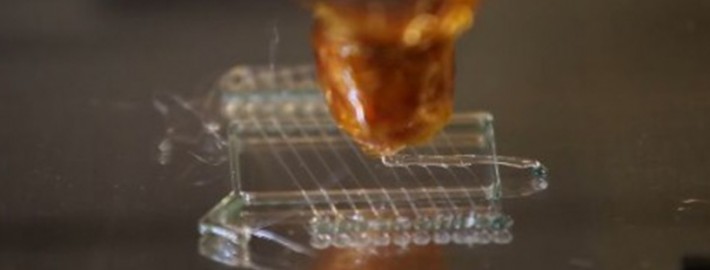RepRap Prints Blood Vessel Networks out of Sugar
3D printable organs are in the works, but one thing holding researchers back is the lack of a way to print reliable vascular networks within the organs. If the blood can’t flow through correctly, the printed organs will fail. Researchers at the University of Pennsylvania and the Massachusetts Institute of Technology (MIT) believe they have found a way to produce dissolvable scaffolds that will create hollows within printable organs. Those hollows will mimic our own blood vessel networks and may be the key to successfully printing larger and more complex human organs for transplant.
The researchers are using a RepRap printer to lay down a combination of sucrose and glucose along with dextran for structural reinforcement. Once the sugar hardens the scientists surround the scaffold with a network of cells to create tissue. When that process is finished the scientists dissolve the sugar solution, leaving small hollows within the sample. Those hollows can be used to deliver nutrition to the inner cells, keeping them alive the same way our blood vessel networks keep us alive.
Here’s a video that explains the process:
Their efforts have been so successful that they can even package and distribute the tissue samples to other labs. It’s an advancement that could kickstart the development of larger and more complex printable organs than any we’ve seen yet.
We have already covered similar 3D printing technology being used to build miniature kidneys and breast implants for cancer patients. If scientists can successfully reproduce our vascular network who knows what may be next?





Leave a Reply
Want to join the discussion?Feel free to contribute!